The birthplace of a flourishing buddha is China. Although this exotic plant has adapted to the harsh Russian climate, it is not often found in gardens. The reason for this is the difficulty in caring for the plant in the fall. To successfully preserve the shrub until spring, it must be carefully covered, after preliminary pruning. In the same period, transplantation or reproduction is performed.
Content
General tips and tricks on the features of autumn care and preparation for winter
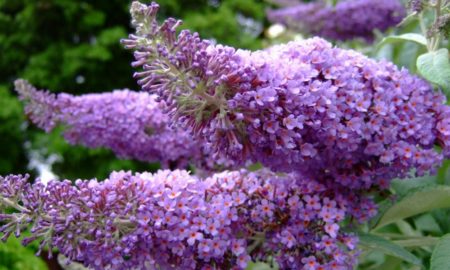 The lush bushes of buddha during flowering resemble lilac. This period falls in the fall, when most of the garden plants are already entering the dormant stage. David’s buddy is most adapted to the Russian climate. This species is characterized by rapid growth and early flowering. But even he needs careful preparation in the fall in order to successfully survive the winter. David’s buddle must be not only properly trimmed, but also watered and fertilizer applied.
The lush bushes of buddha during flowering resemble lilac. This period falls in the fall, when most of the garden plants are already entering the dormant stage. David’s buddy is most adapted to the Russian climate. This species is characterized by rapid growth and early flowering. But even he needs careful preparation in the fall in order to successfully survive the winter. David’s buddle must be not only properly trimmed, but also watered and fertilizer applied.
Proper pruning of stems
Most shrub plants grown in Russia in the fall are simply thinned out. For a wake-up, such a scheme is not suitable. It needs to be cut off under the stump. This allows you to successfully grow awkwardness even in northern climates, since the remaining part with a height of not more than 20 cm is easier to shelter for the winter.
Watering and fertilizing
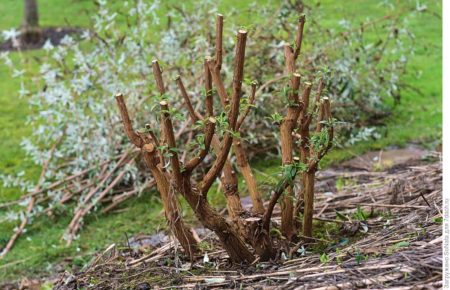 Budleya tolerates a long absence of moisture, but it needs timely watering if the autumn is dry. In this case, the soil is moistened after it has completely dried, using standing water.
Budleya tolerates a long absence of moisture, but it needs timely watering if the autumn is dry. In this case, the soil is moistened after it has completely dried, using standing water.
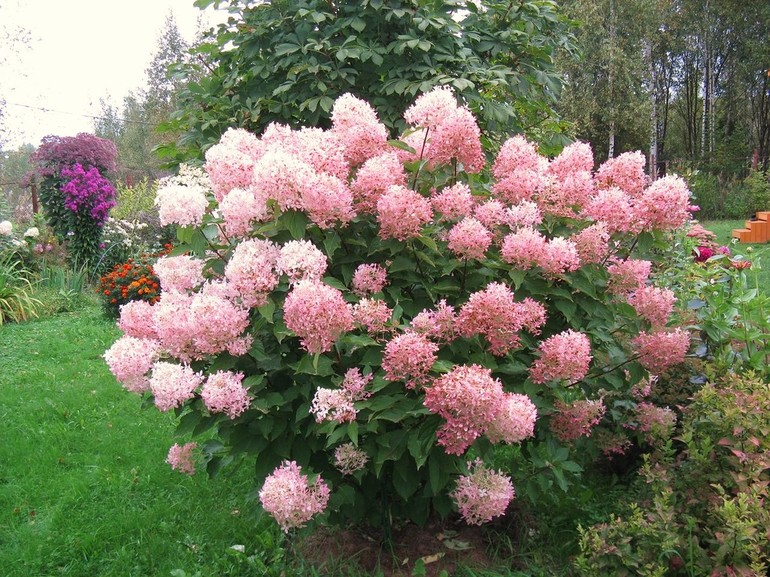 You may be interested in:
You may be interested in:For high-quality flowering, the last feeding of the wake-up season should contain a lot of potassium and phosphorus. Fertilizers are applied before the beginning of the flowering period. Then top dressing is stopped in order to induce the plant to the beginning of the dormant period under conditions of a lack of nutrients.
Autumn pruning
For shrubs with a high growth rate, it is very important to periodically cut branches. Timely autumn pruning is the key to lush flowering.
Need to trim
Periodic removal of the branches of the bush contributes to a long and abundant flowering. The expediency of this procedure is explained by a number of factors:
- the branches of the buddle are greatly extended if they are not cut in time, so the bush quickly loses its attractiveness;
- regular pruning develops resistance to diseases and allows the plant to quickly adapt to the climate;
- after pruning, budding blooms lushly;
- for plants grown as hedges, cutting branches sets the shape.
Suitable time for trimming
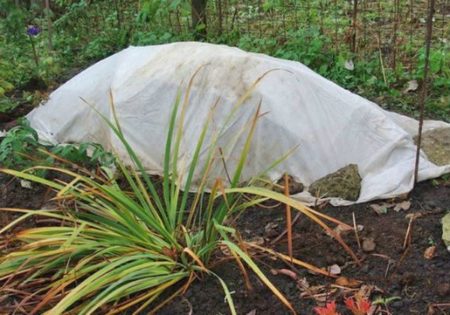 Shrub branches are removed in October or November, after the leaves turn black.The plant cut off at this time is much easier to close for the winter. This is important in order to successfully maintain winter weather in the conditions of growth in the central part of Russia or in the Northern regions.
Shrub branches are removed in October or November, after the leaves turn black.The plant cut off at this time is much easier to close for the winter. This is important in order to successfully maintain winter weather in the conditions of growth in the central part of Russia or in the Northern regions.
Optimal cropping pattern
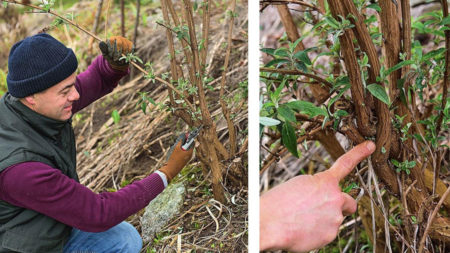 Initially, all faded inflorescences are removed. They greatly spoil the appearance of the plant. Then the bush is cut under a stump. Moreover, for young buddles leave no more than 20 cm of shoot with three buds above the soil. In bushes, whose age exceeds 2 years, a third of the length is left from the shoot. This is enough so that with the onset of spring the plant starts growing and quickly regains its decorative effect. In addition, short-cut bushes are easier to shelter for wintering.
Initially, all faded inflorescences are removed. They greatly spoil the appearance of the plant. Then the bush is cut under a stump. Moreover, for young buddles leave no more than 20 cm of shoot with three buds above the soil. In bushes, whose age exceeds 2 years, a third of the length is left from the shoot. This is enough so that with the onset of spring the plant starts growing and quickly regains its decorative effect. In addition, short-cut bushes are easier to shelter for wintering.
To cut shoots use a sharpened knife or garden pruner. Preferably sterilize the instrument. The place of cut must be treated with garden var.
How to care for waking up after trimming
 No special events for wake-up care after haircuts are needed. It is enough just to collect the cut shoots and destroy them. During this period, the plant does not need additional fertilizing, since it has a dormant period.
No special events for wake-up care after haircuts are needed. It is enough just to collect the cut shoots and destroy them. During this period, the plant does not need additional fertilizing, since it has a dormant period.
Shelter for the winter
It is customary to shelter many garden plants for the winter in order to improve their survival in conditions of prolonged cold. This is especially true for such thermophilic representatives of exotic flora as autumn lilacs, since they are not initially adapted to severe frosts.
For the shelter you will need a spacious box of boards or several arcs in combination with covering material. Mulch will also be required.
The need for winter shelter
The natural habitat of wake-ups is the tropics and subtropics with a constantly warm and humid climate. In Russia, the temperature in winter drops significantly. Therefore, frosts of -20 degrees lead to freezing of the shoots of the southern beauty. If the thermometer drops even lower, the bush dies.
Technology and terms of shelter, necessary materials
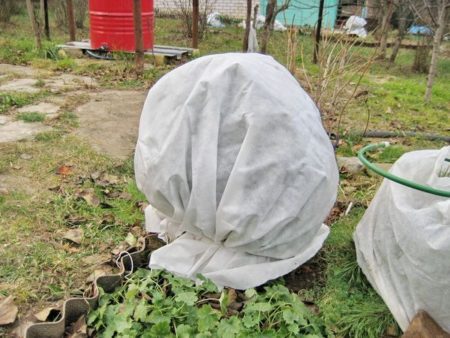 You can cover the wake-up room for the winter after autumn pruning, when the plant enters a dormant state. Do this exclusively in dry weather in the absence of strong winds. If during the warming of the branches the plants are moist, they will begin to swirl and the bush will die.
You can cover the wake-up room for the winter after autumn pruning, when the plant enters a dormant state. Do this exclusively in dry weather in the absence of strong winds. If during the warming of the branches the plants are moist, they will begin to swirl and the bush will die.
Plants whose age does not exceed one year have not yet been sufficiently strengthened to successfully winter even under high-quality shelter. Therefore, such bushes are dug up, keeping an earthen lump, placed in a plastic container and transferred to the basement for the winter.
Adult bushes are insulated as follows:
- After pruning, the remainder is completely covered with dry soil.
- A plank box or other suitable-sized container is placed on top.
- Cover the construction with roofing material or slate.
- During the winter, snow is periodically poured over the shelter.
Sheltering a budell in this way, it is undesirable to use polyethylene or insulation in the form of wood shavings. These materials cause the plants to heat up.
In another embodiment, the shelter is built in the form of a kind of mini-greenhouse. The plant is also completely covered with dry soil. Then the trunk circle is mulched, laying peat or rotted manure. Arcs made of wood or metal are placed on top, observing a distance of 30 cm from the soil surface. The design is tightened with a suitable covering material. To do this, use a film, spanbond or lutrasil. As an additional protection in conditions of a significant drop in temperature, hay or dried leaves are piled on top.
Possible mistakes
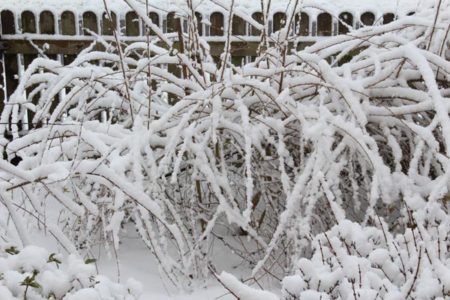 Many inexperienced gardeners build shelters incorrectly for the winter, which leads to the death of the plant or freezing of the branches. Typical errors are:
Many inexperienced gardeners build shelters incorrectly for the winter, which leads to the death of the plant or freezing of the branches. Typical errors are:
- the construction of a shelter in wet weather, which leads to rotting of the kidneys and rooting out of the neck of the neck;
- lack of ventilation during the thaw;
- Fertilizing in the autumn prolongs the growing season.
Preparing for winter by region
After completing the preparatory work, they choose the optimal method of winter shelter. It largely depends on the climate in the region. The basic rule is that the lower the air temperature in winter, the thicker the mulching layer should be and the higher the height of the air gap.
 You may be interested in:
You may be interested in:Wake-up Protection for Mid-Area Areas
In areas belonging to central Russia, it is optimal to build a greenhouse over a trimmed bush. To do this, use metal or wooden arcs and a film.
Shelter for the winter in the Volga region
In this case, the shrub is covered with a film greenhouse, and mulch of dense material is placed on top of it. An alternative is to cover the stump with cut branches of spruce and install a wooden box on top.
Winter protection for Siberia and the Urals
 In conditions of Siberian winter, to protect against frost, the prepared bush is covered with sawdust. In this way, you can keep awake only in Siberia or the Urals. In regions with warmer winters, sawdust will accumulate moisture from melting snow, which will lead to rotting of the kidneys.
In conditions of Siberian winter, to protect against frost, the prepared bush is covered with sawdust. In this way, you can keep awake only in Siberia or the Urals. In regions with warmer winters, sawdust will accumulate moisture from melting snow, which will lead to rotting of the kidneys.
Is it worth it to plant or transplant on weekday autumn
It is preferable to transplant or plant in a permanent place when I am in the spring. This plant has a deep root root, which is easily damaged during transplantation.
Training
For weekdays it is important to choose a place that is closed from drafts with good lighting or light partial shade. The soil should dry out periodically, as the abundance of water in the area leads to rotting of the roots. For the good development of a strongly growing root system, plants can not be planted densely.
The transplant is performed as follows:
- They dig a bush, trying to maintain the integrity of the roots as much as possible.
- They make a new landing pit, the size of which is twice the size of the root system.
- A 10 cm thick drainage layer is laid at the bottom.
- Pour a little soil, consisting of an equal amount of black soil, leafy soil and humus.
- The plant is placed in a pit, combining the root neck with the soil level, and is covered with prepared soil.
- Seal the soil around the trunk.
Transplant Care
The transplanted plant is abundantly watered with settled tepid water. It is best to pour water into a groove dug around the plant. So, the root system is saturated with moisture more evenly. In the future, the plant is watered only after the soil has completely dried.
Breeding in the fall
 To reproduce wake-ups in the fall, use the vegetative method. Cuttings are harvested after pruning and immediately planted in fertile soil in containers and stored in the basement. Periodically they are watered and aired. When the warm weather is finally established, the plants are transplanted to a permanent place.
To reproduce wake-ups in the fall, use the vegetative method. Cuttings are harvested after pruning and immediately planted in fertile soil in containers and stored in the basement. Periodically they are watered and aired. When the warm weather is finally established, the plants are transplanted to a permanent place.
Finally
The advantage of autumn lilacs in its unpretentiousness. The plant tolerates drought and is resistant to cold, if properly prepared for winter. The responsibility and patience shown by the gardener are rewarded in full with the lush flowering of the weekday.




 10 beautiful annuals that bloom all summer
10 beautiful annuals that bloom all summer Sow in the ground, without seedlings: 10 beautiful and unpretentious flowers
Sow in the ground, without seedlings: 10 beautiful and unpretentious flowers Platicodon planting and outdoor care
Platicodon planting and outdoor care Hosta - planting and care in the open ground in the Urals
Hosta - planting and care in the open ground in the Urals